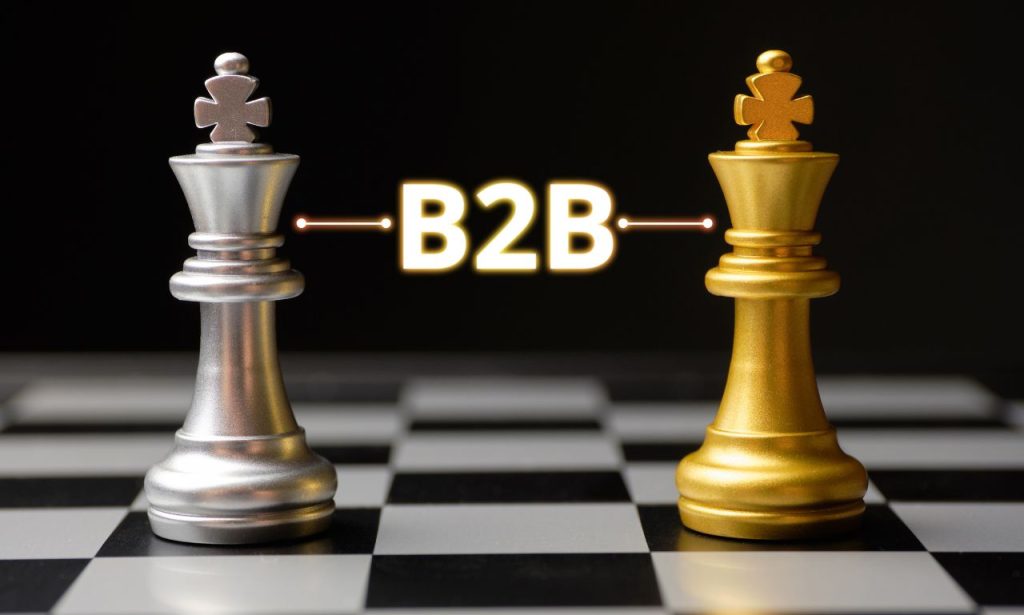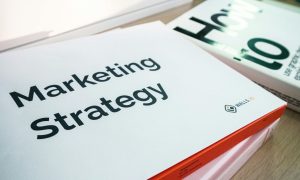Do you ever notice how the best B2B companies are running webinars? That’s not by accident. Webinars have become one of the most powerful tools in the B2B marketing arsenal. They combine education, engagement, and promotion in a way that few other marketing channels can match. Let’s break down the step-by-step process to launch your webinar program and avoid the common pitfalls that waste time and resources.
Selecting the Right Speakers and Hosts
Your audience isn’t tuning in to hear a monotone presenter read slides—they want dynamic experts who can deliver real insights.
When I work with clients on their webinar strategy, I always recommend a two-pronged approach to speaker selection. First, leverage internal experts who know your product and industry inside out. These team members bring authenticity and deep product knowledge that resonates with potential customers. Second, partner with industry thought leaders who bring external credibility and can attract a wider audience to your event.
The host is equally crucial in maintaining energy and guiding the conversation. Look for someone with strong facilitation skills who can manage time, ask insightful questions, and handle unexpected technical issues smoothly. Your host should be comfortable improvising while keeping the discussion focused on delivering value to attendees.
Remember that the chemistry between speakers matters. Before confirming your lineup, arrange a brief prep call to ensure the dynamics work and that everyone understands their role in creating an engaging webinar experience.
Setting Goals and Objectives

You wouldn’t launch an advertising campaign without clear KPIs, so why would you run a webinar without defined objectives? Every successful webinar starts with crystal-clear goals.
Are you aiming to generate new leads at the top of your funnel? Or nurture existing prospects closer to purchase? Your primary goal is to establish thought leadership in your industry. Different objectives require different webinar approaches.
For lead generation webinars, focus on topics with broad appeal that address common pain points. Your content should demonstrate an understanding of industry challenges without diving too deep into your specific solution.
Conversion-focused webinars work best with middle-of-funnel prospects who already recognize their problem. These sessions can include product demonstrations and specific use cases, showing how your solution solves their challenges.
Whatever your primary objective, establish measurable targets. This might include registration numbers, attendance rates, engagement metrics, or post-webinar conversions. Concrete numbers let you evaluate success and refine your approach for future webinars.
Choosing the Right Format and Topic
The webinar format should align with your goals and audience preferences. Panel discussions create dynamic conversations between multiple experts. Product demos work well for prospects who are closer to purchase decisions. Interactive workshops engage participants with hands-on learning opportunities.
Topic selection remains one of the most critical decisions in your webinar strategy. The best webinar topics intersect with what your audience cares about and what your company can credibly address.
Start by analyzing your audience’s pain points through customer interviews, sales team feedback, and industry research. What questions do prospects consistently ask during sales calls? What challenges keep your customers up at night? These insights form the foundation of compelling webinar topics.
Next, examine current industry trends and hot topics. Tools like BuzzSumo can show which industry content gets the most engagement. Industry publications and competitor webinars also provide valuable topic inspiration.
Finally, consider your unique angle. What perspective or approach can your company offer that differs from the standard industry narrative? This distinctive viewpoint helps your webinar stand out in a crowded market.
Creating a Promotional Plan
Even the most valuable webinar won’t succeed if nobody knows about it. Your promotional strategy should begin at least three weeks before the event date.
Email marketing typically drives the highest conversion rates for webinar registrations. Create a sequence of announcement emails that emphasize the specific value attendees will receive. Segment your list to target prospects most likely to benefit from your chosen topic.
Social media campaigns extend your reach beyond existing contacts. LinkedIn works particularly well for B2B webinars, especially when your speakers share promotional content with their networks. Create platform-specific messaging that highlights different aspects of your webinar.
Your website should feature prominent webinar promotions, including homepage banners and dedicated landing pages. The registration page must communicate the webinar’s value proposition, speaker credentials, and logistical details.
Partnership promotion can significantly boost registration numbers. Identify complementary companies with shared audiences but non-competing products. Co-marketing arrangements where both organizations promote the webinar to their lists often yield impressive results.
Don’t forget about your sales team in promotion efforts. Equip them with personalized invitation templates they can send to prospects at appropriate funnel stages.
Identifying Areas for Improvement
Continuous improvement separates great webinar programs from mediocre ones. Every webinar presents an opportunity to learn and refine your approach.
Attendance metrics provide the first layer of insight. Track registration-to-attendance conversion rates, drop-off times during the webinar, and engagement metrics like questions asked and poll participation. Unusual patterns often highlight specific improvement areas.
Post-webinar surveys deliver direct feedback from participants. Keep surveys brief but include both quantitative ratings and qualitative feedback opportunities. Ask specifically what content was most valuable and what topics attendees would like to see in future webinars.
Technical execution deserves careful review. Audio quality issues, platform limitations, or presentation glitches can undermine otherwise excellent content. Document any technical challenges and develop protocols to prevent recurrence.
Content analysis helps optimize future presentations. Review which slides generated the most questions or engagement. Note that when attendee numbers dropped significantly, often indicated content that didn’t resonate.
Most importantly, compare webinar performance against your established objectives. Did you hit your registration targets? How did attendance rates compare to industry benchmarks? What percentage of attendees converted to the next funnel stage?
Leveraging Post-Webinar Follow-up Strategies
The hours and days after your webinar often determine its ultimate ROI. Surprisingly, many companies invest heavily in webinar creation but neglect structured follow-up.
Segment your follow-up strategy based on attendee engagement levels. Participants who asked questions or engaged throughout the session typically show higher interest levels and deserve priority outreach from sales teams.
Send recording links to attendees and registrants who were unable to attend the live event. Your follow-up email should include additional resources related to the webinar topic—think checklists, templates, or research that extends the content.
For higher-intent prospects, personalized follow-up yields the best results. Reference specific questions they asked or polls they participated in during the webinar. This personalization demonstrates attentiveness and increases response rates.
Create a content nurture sequence that builds on the topic of the webinar. This might include blog posts that address common questions raised during the Q&A or case studies that showcase successful implementations of concepts discussed.
Don’t overlook the value of social proof in your follow-up. Share positive feedback from attendees or key insights that resonated with the audience. This social validation reinforces the value of your content and encourages engagement with future webinars.
Managing Q&A Sessions and Engagement
Interactive elements transform passive viewing into active participation. The Q&A session typically generates the highest engagement during webinars, but many hosts handle this critical component poorly.
Plan for Q&A success by preparing answers to anticipated questions. Review sales calls and previous webinars to identify common questions about your topic. Having thoughtful responses ready ensures smooth delivery, even for challenging questions.
Designate a team member to monitor incoming questions throughout the presentation. This person can organize questions by theme, eliminate duplicates, and flag high-priority inquiries from key prospects.
Engagement shouldn’t be limited to the final Q&A segment. Incorporate interactive elements throughout your presentation using polls, surveys, and chat prompts. These engagement opportunities maintain audience attention and provide valuable insights about participant interests.
Technical preparation prevents engagement disasters. Test all interactive features before going live and have backup plans for common technical issues. If your platform’s chat function fails, for example, quickly direct attendees to submit questions via email.
What are the 4 C’s of B2B Marketing?
The 4 C’s framework provides a valuable structure for developing effective B2B marketing strategies, including webinars.
Customer represents your deep understanding of buyer needs and pain points. Successful webinars start with customer insights—what information do your prospects desperately need? What challenges keep them awake at night? Your webinar content should address these pain points rather than discussing your industry broadly.
Content focuses on delivering genuine value rather than thinly disguised sales pitches. Your webinar should provide actionable insights that attendees can implement immediately, regardless of whether they purchase your solution. This value-first approach builds trust and positions your company as a knowledgeable resource.
Context involves delivering the right message at the appropriate buying stage. Early-funnel prospects need educational content about industry challenges, while later-stage prospects benefit from specific implementation guidance. Tailor your webinar content to match your audience’s current decision stage.
Consistency builds audience trust over time. Rather than hosting one-off webinars, develop a consistent program with regular scheduling and predictable value. This consistency transforms webinars from isolated events into a reliable resource your prospects actively anticipate.
Is B2B Profitable?

B2B marketing investments, including webinars, consistently demonstrate strong ROI when executed strategically. The profitability stems from several key factors inherent to the B2B model.
Higher contract values justify greater acquisition costs. While B2B webinars require significant resource investment, the potential returns from enterprise clients make this investment worthwhile. A single converted enterprise client often covers the entire cost of a webinar program.
The sales cycle for B2B typically spans months rather than days. Webinars provide valuable touchpoints throughout this extended journey, nurturing prospects toward eventual purchase. Their effectiveness in accelerating decision-making represents substantial value, even when direct attribution proves challenging.
Customer lifetime value further enhances webinar profitability. B2B relationships typically continue for years, generating recurring revenue that compounds the return on your initial webinar investment. When calculating webinar ROI, consider immediate conversions and long-term customer value.
Webinars specifically deliver exceptional ROI compared to many traditional marketing channels. Combining qualified lead generation, thought leadership positioning and relationship building creates multiple value streams from a single event.
Conclusion
B2B marketing webinars represent one of the most versatile tools in your marketing arsenal. They simultaneously generate leads, nurture prospects, and establish thought leadership—a few other tactics deliver this combination of benefits.
Success requires thoughtful planning across every element we’ve discussed: speaker selection, clear objectives, compelling topics, promotional strategy, continuous improvement, strategic follow-up, and engaging delivery.
Start small with a single webinar focused on a topic where your company has genuine expertise. Apply the frameworks outlined here, measure results carefully, and refine your approach with each subsequent event. Over time, you’ll develop a webinar program that consistently delivers qualified prospects and positions your brand as an industry authority.
Companies that see the greatest webinar success don’t view them as isolated marketing events but as integral components of their overall customer journey. Integrate your webinars with content marketing, sales enablement, and customer success initiatives for maximum impact.
What’s your next step? Identify one customer pain point your company addresses exceptionally well. That’s your first webinar topic. The audience is waiting.
ALSO READ: What are the 9 Big Customer Experience Ideas From Do B2B Better?
FAQs
Most successful B2B webinars run 45-60 minutes, including Q&A time. This duration allows for substantive content without overtaxing attendees’ schedules.
Tuesday through Thursday, between 11 am and 2 pm in your target audience’s time zone, typically generates the highest attendance rates.
Aim for 25-30 slides for a 45-minute presentation, using a clean design emphasizing key points rather than dense text.
Initial registrations should receive ungated access, but consider gating the recording for new visitors to continue generating leads after the live event.
Three to four speakers provide diverse perspectives while allowing each participant sufficient speaking time.



